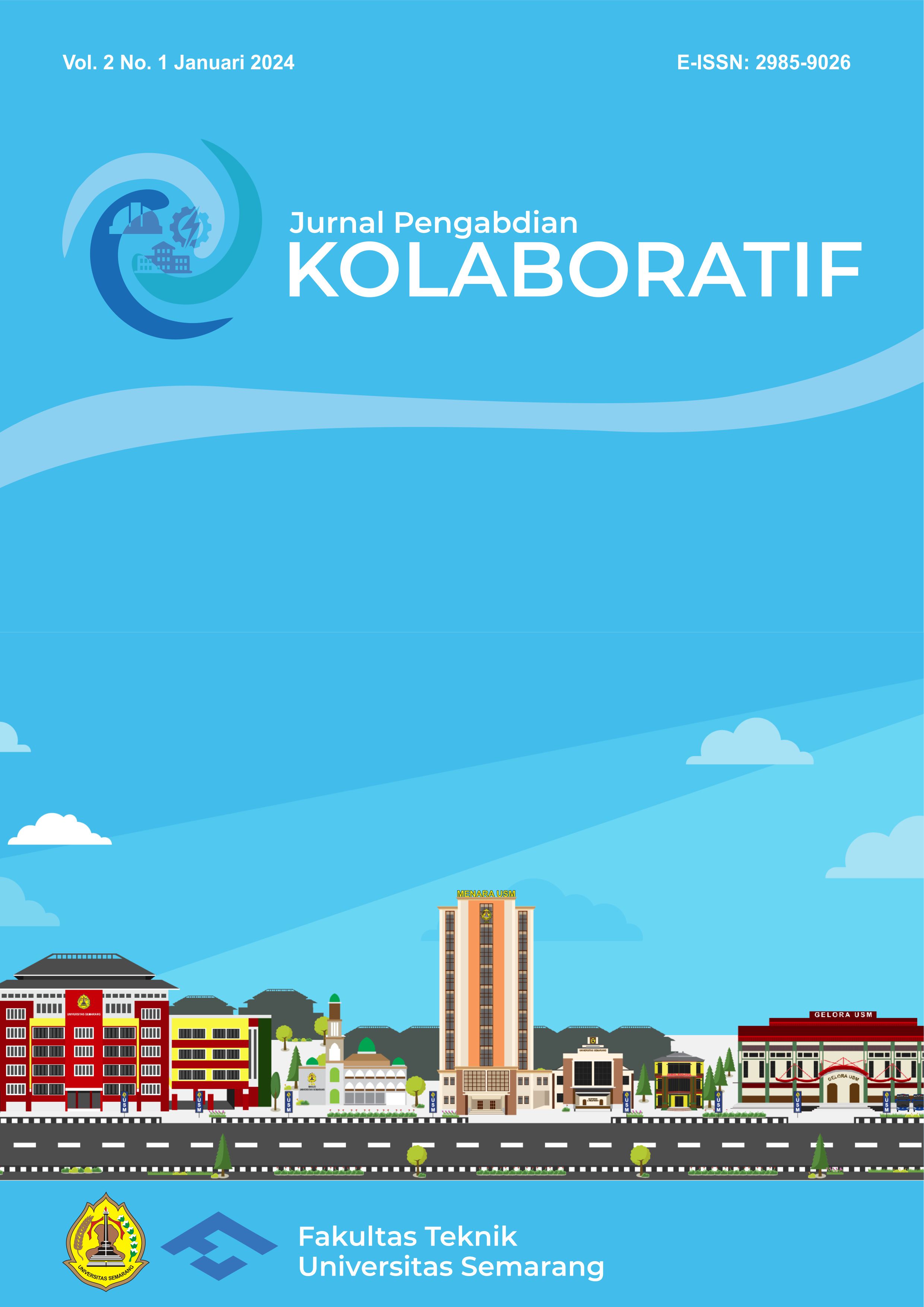Pelatihan Ilmu Ukur Tanah bagi Mahasiswa Universitas Muhammadiyah Semarang (UNIMUS) dan Praktisi Konstruksi
DOI:
https://doi.org/10.26623/jpk.v2i1.6865Keywords:
measurement, azimuth, waterpass, horizontal readingAbstract
Most civil engineering students and construction practitioners experience misconceptions about knowledge and even incorrect practical procedures for using measurement instruments. One of the misconceptions that is often encountered is the meaning of ordinary and extraordinary positions, the meaning of azimuth, the meaning of angles, directions, readings, and many more. Misconceptions in practice include the inaccurate process of centering, leveling, and targeting due to a misunderstanding of the pointing, targeting, and parallax processes. There are also often debates between students because of differences in interpretation of the influence of right or left rotation on horizontal readings or counting angles. On the other hand, the development of measurement and mapping surveys is increasingly rapid. However, measurement principles should not be ignored. These principles are the pillars of knowledge and the pillars of a surveyor's practice, with which fieldwork evaluations and decisions can be taken accurately and responsibly, both academically and practically. The measurement training activity using a water level tool is intended for Civil Engineering students at the Muhammadiyah University of Semarang (UNIMUS) and construction practitioners. This activity aims to improve understanding and skills so that participants can use the spirit level measuring instrument correctly. The method used is the delivery of theory, followed by practice in the field. The results obtained are an increase in participants' abilities in the measurement process and calculating measurement data based on the results of work and direct evaluation in the field.Downloads
References
Aziz, A. (2019). PENGUKURAN ELEVASI LAHAN PARKIR METODE SIPAT DATAR AREA PELABUHAN PENYEBERANGAN PAMATATA, SELAYAR. Kab. Pangkajene dan Kepulauan (Pangkep): PROGRAM STUDI TEKNIK KELAUTAN, JURUSAN TEKNOLOGI PENANGKAPAN IKAN, POLITEKNIK PERTANIAN NEGERI PANGKEJENE DAN KEPULAUAN.
Basuki, S. (2006). Ilmu Ukur Tanah. Yogyakarta: Gadjah Mada University Press.
Mulyani, A. S. (2020). ANALISIS HASIL PENGUKURAN TINGGI TAKHIMETRI DENGAN SIPAT DATAR TELITI. e-Journal CENTECH, 1(1), 1-14.
Mulyani, A. S., & Tampubolon, S. P. (2015). Analisa Ketelitian Pengukuran Tinggi Dengan Menggunakan Total Station dan Sipat Datar Studi Kasus Daerah Ciloto, Puncak-Jawa Barat. Jakarta: Prodi Teknik Sipil, Fakultas Teknik, Universitas Kristen Indonesia.
Sulandari. (2020). Analisis Terhadap Metoda Pembelajaran Klasikal dan Metoda Pembelajaran E-Learning di Lingkungan Badiklat Kemhan. Jurnal Pendidikan Indonesia, 1(2), 121-132.
Syaifullah, A. (2014). MODUL MKB-2/3 SKS/ MODUL I-IX: ILMU UKUR TANAH. Yogyakarta: KEMENTRIAN AGRARIA DAN TATA RUANG/ BADAN PERTANAHAN NASIONAL SEKOLAH TINGGI PERTANAHAN NASIONAL.
Tjahjono, B. (2023). PELATIHAN DASAR ILMU UKUR TANAH DI SMK NEGERI 1 KUALA PEMBUANG. Jurnal Pengabdian Kepada Masyarakat Jalan dan Jembatan, 1(01), 1-10.
Wongsotjitro. (1980). Ilmu Ukur Tanah (Issue 2). Yogyakarta: Kanisius.
Downloads
Additional Files
Published
Issue
Section
License
This work is licensed under a Creative Commons Attribution 4.0 International License.






